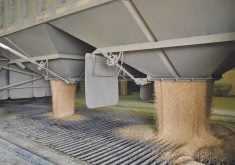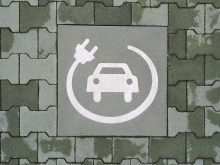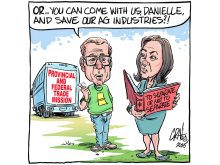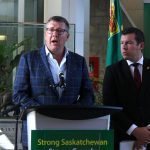Scott is with Tesco Consulting. This opinion was initially published on the Illative Blog, an initiative of Knowledge Impact in Society based in Saskatoon.
Saskatchewan has the highest per capita greenhouse gas emissions of all Canadian provinces and ranks fourth among provinces in terms of total emissions.
It also stands to lose a great deal as a result of climate change impacts. The province sits in an area where significant impacts are predicted.
Complicating matters further, an important part of Saskatchewan’s economy – agriculture – is especially vulnerable. The question of how much Saskatchewan should do and what specific steps should be taken are topics of discussion, debate and controversy.
Read Also
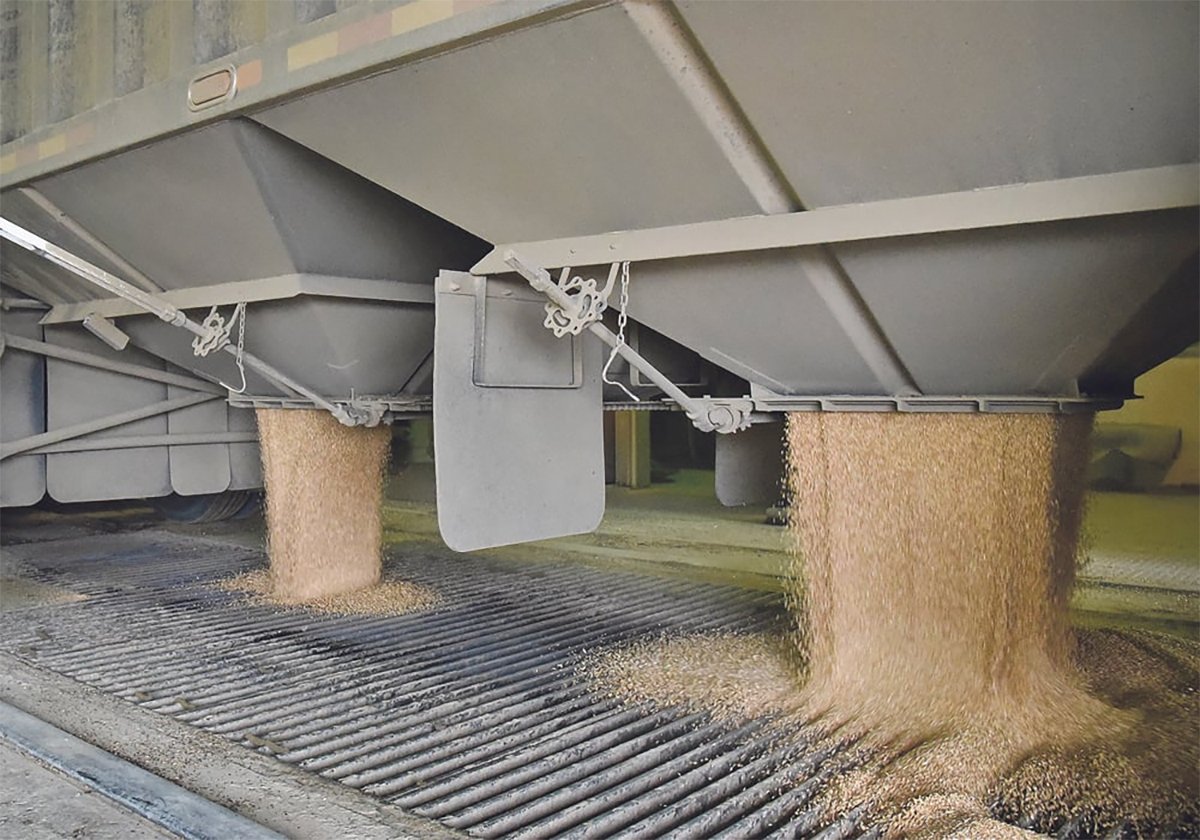
Worrisome drop in grain prices
Prices had been softening for most of the previous month, but heading into the Labour Day long weekend, the price drops were startling.
Take for example the proposed national emissions cap and trade system. With this market-based approach to addressing emissions, large-scale emitters would have their emissions capped. These emitters would then either have to cut their emissions or buy offset credits from someone who can reduce emissions for less money. With the ability to buy offset credits, the overall economy is able to achieve emission reductions for as little cost as possible.
Agriculture is not a sector that is targeted for emissions capping. However, it can play an important role as a provider of offsets. Saskatchewan farms have considerable potential to sequester carbon in soil by adopting reduced tillage, continuous cropping, conversion of annual cropland to perennial grasses and tree planting.
Janzen et al. (2005) provide carbon sequestration estimates for various farmland practices. Relative to estimates reportedby Janzen et al. for continuous cropping and reduced tillage, 0.5 tonnes per acre per year of carbon sequestration would be a conservative estimate of sequestration potential for these two practices alone.
On Saskatchewan’s 42 million acres of farmland used for annual crops, this could mean sequestration potential of more than 20 million tonnes per year of carbon dioxide equivalent, which would offset about 30 percent of Saskatchewan’s total CO2 annual emissions of 70 million tonnes.
Not all of this carbon would necessarily earn offset credits. However, if it did, and carbon prices similar to European Union Emission Trading System prices were achieved, it would mean an additional $400 to $800 million in gross revenue for Saskatchewan’s agricultural sector annually.
Perennial grasses, the growth of new forests, agroforestry and other greenhouse gas removal and reduction activities add to the overall potential.
The offset potential for agricultural producers is one reason for Saskatchewan to be interested in a cap and trade system.
However, there are also concerns. Nationally imposed emission caps on certain sectors that are relatively important in Saskatchewan will have negative economic impacts.
As well, there is a risk of “non-permanence” of the predominant offset agricultural producers are able to provide, such as soil carbon sinks.
Sinks last as long as the land use or farm practice that created the sink continues, or as long as an effective replacement practice remains. If these sink maintenance practices end, carbon is released back to the atmosphere, resulting in little or no net climate benefit. The concern about “non-permanence” is that farmers may at some point want to alter their sink maintenance practices in response to changes in production and market conditions.
Given the concerns just described, policy makers may be tempted to consider approaches other than cap and trade. Instead of large-scale emitters paying farmers for offsets that may in the end not benefit climate change goals, the money could instead be used to develop technology that will reduce emissions of large scale emitters, such as carbon capture and geological sequestration that is being tested in the oil fields of southeastern Saskatchewan.
An important policy question, however, is how quickly large scale emitters will come up with such emission reducing technologies if emission caps are not imposed to signal the clear intent of governments to achieve emission reduction goals. There is a strong argument that caps can significantly hasten technology development and innovation.
Undoubtedly, new technology will play a major part in a Saskatchewan emission reduction strategy. However, a singular focus on new technology can easily lead to a search for that ever-elusive magic bullet that will solve all the problems.
Solutions are more likely to come from a whole range of technologies, existing and new, and from a variety of public policy instruments. The very hope of a magic bullet can create complacency and a false sense of security, with the unfortunate result that measures to solve the problems at hand are not taken.
Agricultural sink technology that is capable of making substantive and immediate offsets to Saskatchewan’s overall emissions exists today. It seems a mistake not to get the most benefit possible from that technology.
If agricultural carbon sinks are to be used effectively to contribute to climate change mitigation, the sinks will have to be maintained long term.
It is possible to speculate regarding circumstances where this would not need be the case, such as if at some time in the future we expect climate change to be so successfully resolved that the sequestered carbon can be put back into the atmosphere without adverse effect.
However, from today’s vantage point that seems like an unlikely circumstance. Hence, we can expect cap and trade policy to be designed such that someone is held responsible for replacing credits that are lost when sinks are not maintained.
Capped emitters will be extremely reluctant to buy offset credits if they run the risk of having to replace them if farmers discontinue sink maintenance practices.
Thus, if farmers are going to receive a significant offset credit price under a cap and trade system, there are two basic choices:
- Farmers commit to long-term sink maintenance or replace offsets lost if they decide not to maintain the sink.
- Governments backstop the soil sink offsets provided by farmers under a cap and trade system on the basis that soil carbon sinks are urgently needed to begin dealing with the pressing climate change problem.


